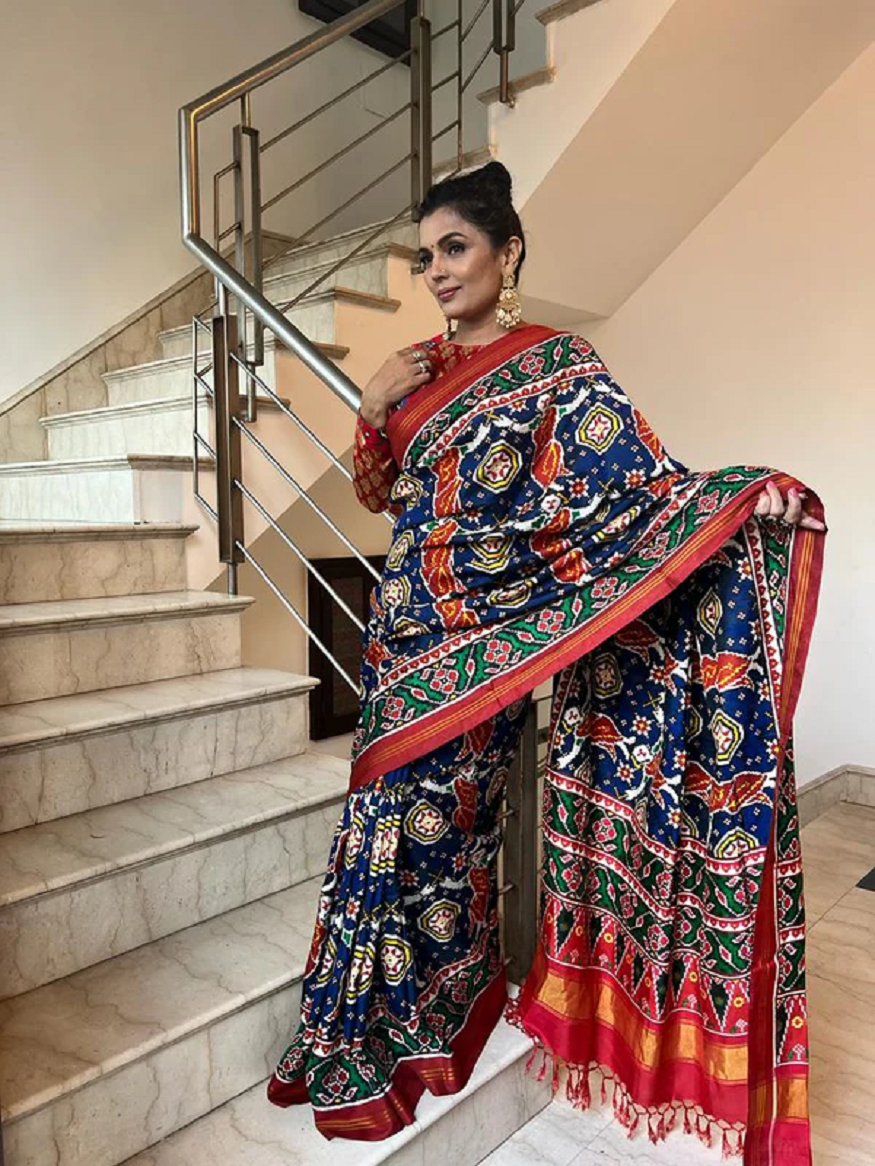 Among India’s most admired textile traditions, Patola sarees stand out for their vibrant hues, geometric patterns, and rich heritage. While the term “Patola” is often used broadly, there are two distinct styles under this name, Rajkot Patola and Patan Patola, each rooted in Gujarat but shaped by unique weaving techniques, histories, and artistic expressions.
Among India’s most admired textile traditions, Patola sarees stand out for their vibrant hues, geometric patterns, and rich heritage. While the term “Patola” is often used broadly, there are two distinct styles under this name, Rajkot Patola and Patan Patola, each rooted in Gujarat but shaped by unique weaving techniques, histories, and artistic expressions.
Let’s take a closer look at what makes each of these sarees for women special, how they differ, and why they continue to hold pride of place in Indian wardrobes.
Origins and Legacy
The story of Patan Patola dates back centuries. Woven traditionally by the Salvi community in Patan, Gujarat, these sarees were once treasured by royals and aristocrats. Even today, they are regarded as one of the most intricate and revered forms of handloom weaving.
Rajkot Patola, in contrast, is a more accessible evolution of the craft. While it draws inspiration from the same visual vocabulary as Patan Patola, it uses simpler techniques, making it relatively easier to produce and more widely availablewithout sacrificing aesthetic appeal.
The Art of Weaving
One of the most important distinctions between the two lies in their weaving method:
- Patan Patola uses the double ikat technique, where both warp and weft yarns are resist-dyed before weaving. Precision is key, as the dyed threads must align perfectly. This results in a saree that looks the same on both sides,completely reversible.
- Rajkot Patola uses single ikat, where only the weft yarn is dyed, and the warp remains a single colour. This technique is less complex and quicker to execute. The finished saree is not reversible, with the pattern more vivid on the front side.
Designs and Motifs
Both styles feature vibrant geometric and traditional motifs, but the execution and visual tone differ:
- Patan Patola is known for motifs like elephants, parrots, floral vines, and the renowned “narikunjar” (woman with elephant). The patterns are fine, symmetrical, and often created using natural dyes for a muted yet elegant appearance.
- Rajkot Patola showcases bolder, more flamboyant motifs. The use of synthetic dyes results in brighter, more saturated colours, with patterns that are often larger and more graphic.
Craftsmanship and Time
Crafting time is another key differentiator:
- A Patan Patola saree can take anywhere from six months to a year to complete due to the labour-intensive double ikat process.
- A Rajkot Patola, on the other hand, may take a few weeks, making it more accessible in terms of both availability and cost.
Sheen and Finish
Though both styles are traditionally woven in silk, their finishes vary:
- Patan Patola has a crisp, rich texture with a refined sheen and tight weave. It holds its structure beautifully and feels luxurious.
- Rajkot Patola is softer and more fluid, often preferred by those who enjoy lightweight drapes with ease of movement.
Cultural Relevance and Occasion Wear
Their heirloom quality and rarity make them highly valued.
Rajkot Patola, while still celebratory in appearance, is more versatile. These sarees can be worn for festive functions, family gatherings, or even formal office events, offering traditional flair with everyday practicality.
Final Thoughts
Both Rajkot Patola and Patan Patola are exceptional examples of India’s textile mastery. While they share a cultural lineage, they differ significantly in weaving technique, intricacy, styling, and accessibility.
- Choose Patan Patola if you’re drawn to artisanal detail, fine weaving, and traditional elegance.
